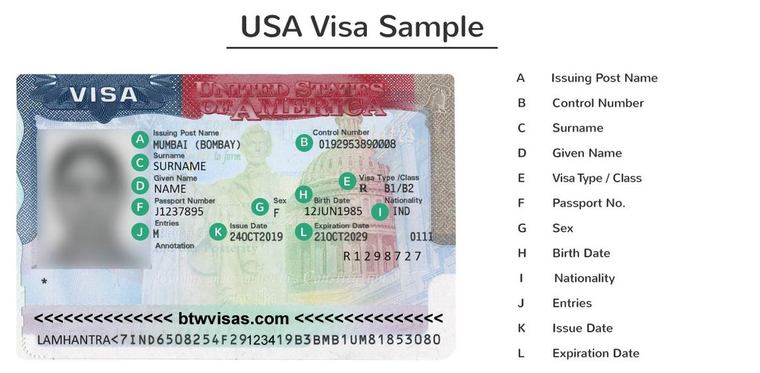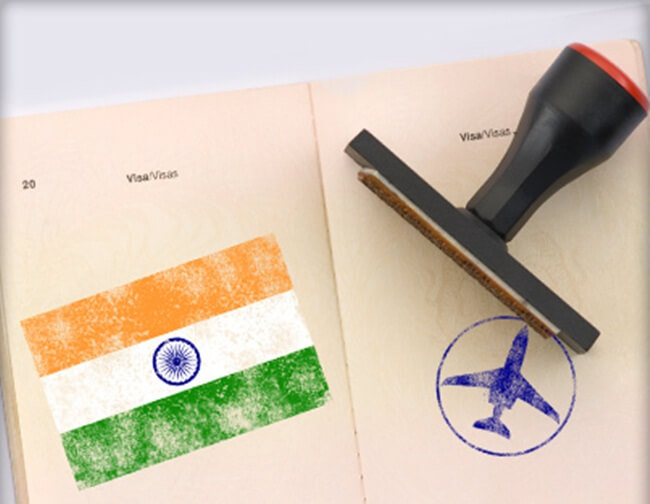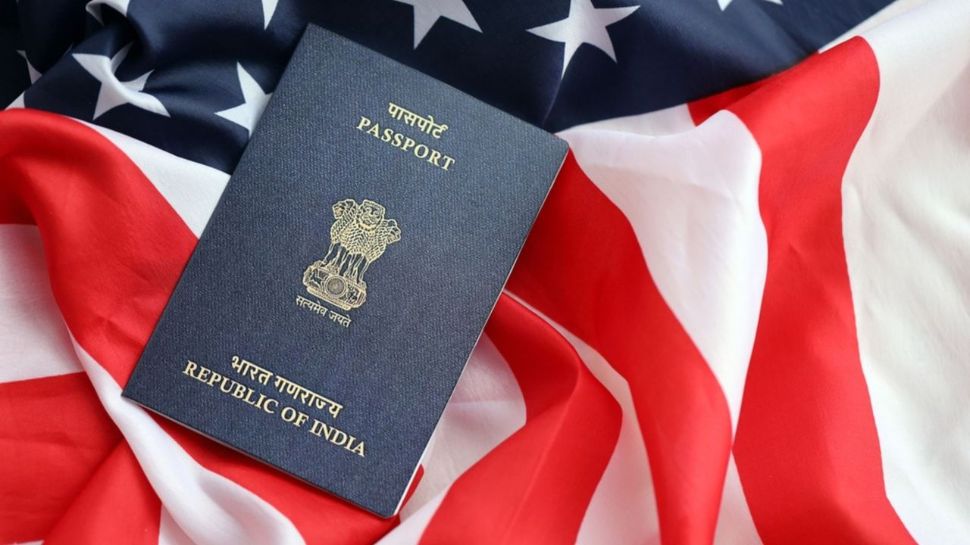Unlocking Opportunities: Crucial Info on United States Visas for Indian People
Maneuvering the intricacies of united state visa alternatives is important for Indian citizens aiming to check out chances in the United States. With numerous classifications ranging from short-term site visitor visas to pathways for long-term residency, recognizing the nuances of each can considerably affect one's journey. This conversation will highlight vital details, including application treatments and qualification standards, that can encourage individuals in their quest of new experiences. As we unbox these important facets, the inquiry occurs: what techniques can one use to enhance their possibilities of an effective application?
Summary of United States Visa Kind
When going across the facility landscape of US migration, recognizing the different kinds of visas readily available is crucial for Indian residents looking for entrance into the USA (Types Of US Visas). The United States migration system is primarily categorized right into 2 broad classifications: immigrant visas and non-immigrant visas
Immigrant visas are designated for those planning to live permanently in the US. These consist of family-sponsored and employment-based visas, where applicants usually call for a sponsor. Non-immigrant visas, on the other hand, satisfy individuals seeking momentary home, such as visitors, organization visitors, and those taking a trip for details objectives like job or research.
Within the non-immigrant group, numerous visa kinds exist, consisting of B-1/ B-2 for company and tourism, H-1B for specialty line of work, L-1 for intra-company transferees, and O-1 for people with phenomenal capacities. Each visa has unique eligibility demands and application processes, requiring complete research study to determine the suitable group.
Recognizing these categories is important for Indian people, as it allows them to browse the application process better, guaranteeing they pick the appropriate visa type to satisfy their specific demands and goals. US Visas For Indian Citizens.
Trainee Visa Options
For Indian citizens striving to study in the USA, trainee visas present an important pathway to pursue scholastic possibilities. The primary visa categories for students are the F-1 and M-1 visas.
The F-1 visa is marked for academic pupils enlisted in a full time program at an accredited institution, such as universities and colleges. This visa allows pupils to take part in on-campus employment and, under specific conditions, take part in optional practical training (OPT) after finishing their level, giving useful job experience in their discipline.
Alternatively, the M-1 visa is intended for occupation or non-academic programs. It provides to pupils pursuing technological or occupation training, enabling them to enlist in non-degree programs. M-1 visa holders may join functional training, yet it is typically much more minimal compared to the F-1 classification.
To acquire a trainee visa, applicants must protect admission to an U.S. institution, obtain a Kind I-20, and demonstrate economic capacity to support their education and living expenses. Comprehending these visa choices is substantial for Indian residents preparing to start their educational trip in the USA.
copyright Categories
Lots of Indian residents seeking employment possibility in the USA might think about various job visa categories tailored to various expert needs and credentials. One of the most famous copyright is the H-1B visa, created for knowledgeable employees in specialized line of work requiring a higher education degree or its equivalent. It permits united state employers to momentarily use international employees, with a cap on the variety of visas released every year.
An additional vital classification is the L-1 visa, which promotes the transfer of workers within international business. The L-1A visa is for managers and executives, while the L-1B visa is for staff members with specialized expertise.
The O-1 visa provides to people with amazing abilities in their area, consisting of science, arts, or service. For farming or seasonal job, the H-2A and H-2B visas are available, allowing employers to employ international employees for short-term placements.
Family-Based Migration
Family-based immigration provides a path for united state people and authorized irreversible homeowners to reunite with their loved ones from India. This immigration category is basic for maintaining familial bonds and assisting in the integration of member of the family right into American culture. U.S. people can petition for immediate family members, consisting of partners, youngsters, and moms and dads, without facing annual limitations on visas. This expedited process considerably minimizes waiting times for these close family connections.
In contrast, legal permanent residents might sponsor partners and unmarried youngsters, however they undergo yearly caps, causing longer wait times. The family-sponsored migration system is divided into 2 main categories: immediate loved ones and family preference groups. The previous includes those who have a direct relationship with a united state person, while the last encompasses farther loved ones, such as siblings and married kids of residents, and children of legal irreversible homeowners.
For Indian people looking for family-based migration, understanding the nuances of this system is critical. Proper paperwork and adherence to application protocols are important for effective sponsorship. By navigating via these intricacies, family members can function towards reuniting and constructing their lives together in the USA.
Long-term Residency Process
The procedure of getting long-term residency in the USA includes a number of crucial visa classifications tailored for Indian people. Recognizing the application steps, consisting of needed documentation and qualification criteria, is vital for a successful end result. In addition, possible applicants ought to understand the anticipated timeline and particular demands associated with each classification.
Visa Categories Overview
While going across the intricacies of the U.S. immigration system, Indian citizens seeking long-term residency should familiarize themselves with numerous visa classifications tailored to different situations. The primary path for long-term residency is through employment-based visas, which are categorized into numerous choices, consisting of EB-1 for individuals with phenomenal capacities, EB-2 for experts holding postgraduate degrees, and EB-3 for proficient employees. Each category has particular eligibility demands and handling times.

Variety visas, although restricted in number, supply an opportunity for more info people from underrepresented nations to make an application for long-term residency via a lotto game system. Additionally, humanitarian options such as asylum and evacuee standing deal paths for those dealing with mistreatment.
Understanding these visa categories is necessary for Indian people, as they substantially influence the technique for obtaining permanent residency in the USA. Each category's nuances and requirements necessitate mindful consideration to line up with specific circumstances and objectives.
Application Process Steps
Guiding the application procedure for irreversible residency in the USA includes numerous essential actions that must be carefully followed to guarantee a successful end result. The journey generally starts with identifying the suitable migration group, such as employment-based or family-sponsored visas. Applicants have to gather essential documents, including evidence of qualification, monetary declarations, and personal recognition.
When the group is recognized, the next step is to file the Type I-130 (Petition for Alien Family Member) or Type I-140 (Immigrant Request for Alien Worker), depending upon the basis of the application. Adhering to the approval of the petition, applicants will certainly need to finish the National Visa Center (NVC) handling by sending the needed charges and types.
Next, the applicant has to go through a medical exam and get authorities clearance certificates. Once these are finished, a meeting will certainly be set up at the U.S. consular office or consular office. It is crucial to prepare thoroughly for this meeting, as it can considerably affect the choice on the application. Upon authorization, the candidate will get their visa, providing them permanent residency in the United States.
Timeline and Needs
Charting the timeline and needs for getting long-term residency in the USA is crucial for Indian people looking for to develop a lasting existence. The procedure primarily rests on employment-based or family-sponsored paths, each with specific requirements and timelines.
For employment-based immigration, the procedure generally begins with a labor qualification, which can take a number of months. When approved, the employer submits a Type I-140, Immigrant Petition for Alien Employee, which can take an extra 6 months to a year, depending on the handling. Complying with I-140 approval, candidates might require to wait for their top priority day to end up being current, which can vary considerably based upon the applicant's category and nation of origin.
For family-sponsored immigration, U.S. residents can petition for instant loved ones, which normally leads to faster processing. However, other family members groups might involve much longer wait times as a result of annual caps.
Application Treatments
Understanding the application treatments for US visas is essential for Indian people looking for access into the United States. How To Get US Visa From India. This area will offer a review of different visa groups and describe the detailed process for applying. By adhering to these guidelines, candidates can navigate the complexities of the visa effectively
Visa Categories Overview
Steering the different visa categories offered to Indian citizens can be an intricate process, but it is crucial for those looking for to take a trip, function, or study in the United States. The U.S. visa system is classified largely right into non-immigrant and immigrant visas, each offering distinct purposes.
Non-immigrant visas, such as B-1/ B-2 for company and tourism, F-1 for academic study, and H-1B for specialized work, allow short-lived stays. Candidates have to show their intent to go back to India after their check out.
On the other hand, immigrant visas, including family-sponsored and employment-based categories, supply a pathway to irreversible residency. These visas typically call for sponsorship from a relative or employer in the U.S., in addition to a strenuous application process.

Step-by-Step Process
Normally, the application procedure for united state visas involves several important actions that applicants should thoroughly comply with to ensure a smooth experience. The initial step is to figure out the proper visa classification based on the function of traveling, such as job, research, or tourist. Once the classification is determined, applicants should complete the online DS-160 form, offering precise personal information and travel information.
After submitting the DS-160, applicants ought to pay the visa fee, which varies by visa kind. Next, arrange a visit for a visa interview at the nearest U.S. Embassy or Consulate. US Visas For Indian Citizens. It is critical to plan for the meeting by celebration called for papers, including a legitimate key, visa verification, charge payment invoice, and any type of supporting documents certain to the visa group
On the day of the meeting, show up punctually and dress properly. Throughout the interview, be prepared to respond to concerns concerning your travel purposes, economic stability, and connections to India. Lastly, if accepted, the visa will certainly be stamped in the key, enabling travel to the USA. Adhering to these actions guarantees an efficient and efficient copyright procedure for Indian residents.
Tips for a Successful Application
)
Make sure that all forms are completed properly and truthfully. Little mistakes or omissions can cause hold-ups or perhaps rejections. It is a good idea to gather all essential supporting documents, consisting of monetary declarations, employment letters, and evidence of connections to India, which demonstrate your intent to return post-visit.
Plan for your visa interview by exercising responses to common concerns connected to your itinerary and background - Types Of US Visas. Confidence and quality can substantially affect the police officer's perception. Take into consideration seeking assistance from trustworthy immigration experts if you really feel overwhelmed.
Often Asked Concerns
What Are the Handling Times for US Visa Applications?
Processing times for united state visa can differ considerably based upon the visa kind, application quantity, and the candidate's area - US Visas For Indian Citizens. Normally, applicants ought to prepare for a processing period ranging from a few weeks to a number of months
Can I Modification My Visa Status While in the US?
Yes, individuals can alter their visa standing while in the USA, offered they meet qualification demands and follow appropriate treatments. It is vital to file the ideal application with U.S. Citizenship and Migration Services (USCIS)
Are There Age Purview for United States Visa Applicants?
There are typically no specific age limits for U.S. visa applicants; nevertheless, certain visa categories may have age-related qualification requirements. It is necessary to review the needs for every visa type to guarantee conformity.
What Prevail Reasons copyright Rejection?
Common factors copyright denial consist of not enough economic resources, failure to show ties to the home nation, incomplete application forms, absence of proper documentation, previous migration infractions, and failing to fulfill eligibility criteria for the specific visa classification.
Just How Can I Appeal a Visa Denial Decision?
To appeal a visa denial, examine the consular policeman's reasons, collect sustaining paperwork, and submit a formal interest the suitable authority, making certain to comply with defined timelines and step-by-step requirements for the appeal process.